Norwich Churches Stained Glass
Select a site from the list below OR move cursor over circles on map to pop up pictures and click to visit.
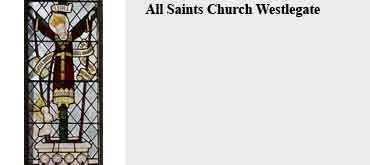 In the windows themselves the only coloured glass that remains are Medieval fragments that have been reset in 3 windows in the north aisle and a 1921, World War 1 memorial window by F. C Eden.
In the windows themselves the only coloured glass that remains are Medieval fragments that have been reset in 3 windows in the north aisle and a 1921, World War 1 memorial window by F. C Eden.
 Not only is there a vast display of Victorian glass on display but also glass dating back to the medieval period has been reintroduced. The two World Wars saw further windows commemorating the dead. Contemporary glass has been introduced including panels by Keith New & John Hayward, in the North transept
Not only is there a vast display of Victorian glass on display but also glass dating back to the medieval period has been reintroduced. The two World Wars saw further windows commemorating the dead. Contemporary glass has been introduced including panels by Keith New & John Hayward, in the North transept
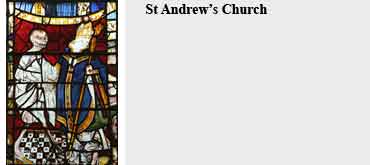 Contains one of the most well known pieces of medieval glass in the country 'The dance of Death'. Another window has the less famous but equally important 'staff of Life'. Numerous fine examples of victorian stained glass make this a church not to miss.
Contains one of the most well known pieces of medieval glass in the country 'The dance of Death'. Another window has the less famous but equally important 'staff of Life'. Numerous fine examples of victorian stained glass make this a church not to miss.
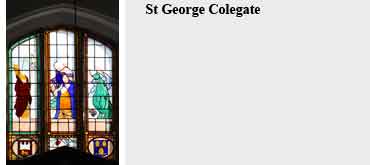 Although it has a splendid collection of monuments it is not renowned for its stained glass the only coloured glass being in the east window. This c1830 window follows the designs of Reynold’s glass at New College, Oxford, unfortunately it is badly decayed.
Although it has a splendid collection of monuments it is not renowned for its stained glass the only coloured glass being in the east window. This c1830 window follows the designs of Reynold’s glass at New College, Oxford, unfortunately it is badly decayed.
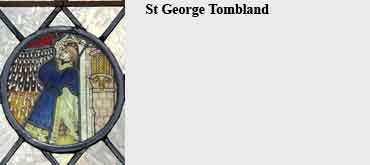 Contains a medieval roundel from a series of 'labours of the month'. There is also some fine examples of Vicrian glass from a range of makers which make this church well worth a visit
Contains a medieval roundel from a series of 'labours of the month'. There is also some fine examples of Vicrian glass from a range of makers which make this church well worth a visit
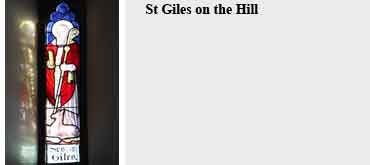 The stained glass in the windows is of High Victorian design made by the highly reputed firm of Clayton and Bell of London and J Bell of Bristol. The only other stained glass is in the chancel arch and is a 1915 depiction of St Giles complete with a hind and arrow, the saint’s distinctive emblems
The stained glass in the windows is of High Victorian design made by the highly reputed firm of Clayton and Bell of London and J Bell of Bristol. The only other stained glass is in the chancel arch and is a 1915 depiction of St Giles complete with a hind and arrow, the saint’s distinctive emblems
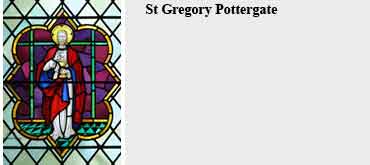 Most of the stained glass is from the late 19th century and is by J & J King of Norwich although fragments of 15th century glass can be seen in a panel in a North aisle window
Most of the stained glass is from the late 19th century and is by J & J King of Norwich although fragments of 15th century glass can be seen in a panel in a North aisle window
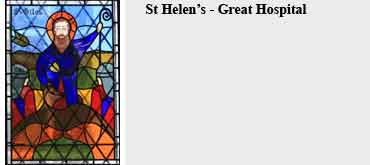 Although the Great Hospital site is both beautiful and of great historical interest, the church’s stained glass is not of particular note
Although the Great Hospital site is both beautiful and of great historical interest, the church’s stained glass is not of particular note
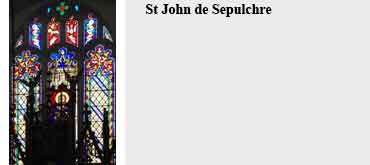 All the windows in the church are of perpendicular style, however, the chancel windows is of a later date as evidenced by the their flatter arches. It is here in the East window that John Dixon’s 1840s window can be found depicting John the Baptist. Unfortunately much of the window is covered by the reredos and it is only possible to see the top section.
All the windows in the church are of perpendicular style, however, the chancel windows is of a later date as evidenced by the their flatter arches. It is here in the East window that John Dixon’s 1840s window can be found depicting John the Baptist. Unfortunately much of the window is covered by the reredos and it is only possible to see the top section.
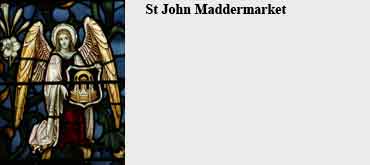 Most of the medieval stained glass was destroyed by a combination of Cromwell's 17th century forces and a 19th century gas explosion. The remaining fragments are now displayed in the north aisle windows. There is a fine selection of Victorian glass.
Most of the medieval stained glass was destroyed by a combination of Cromwell's 17th century forces and a 19th century gas explosion. The remaining fragments are now displayed in the north aisle windows. There is a fine selection of Victorian glass.
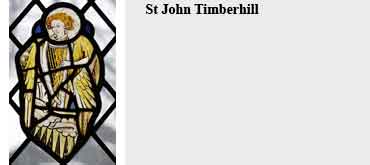 In 1983 it gained two little gems in the form of fifteenth century stained glass angels, which were transferred from St Peter Parmentergate to the tracery lights in the South Aisle window. The remaining stained glass in the church dates from the 20th century and was made by Martin Travers in an Arts & Craft style
In 1983 it gained two little gems in the form of fifteenth century stained glass angels, which were transferred from St Peter Parmentergate to the tracery lights in the South Aisle window. The remaining stained glass in the church dates from the 20th century and was made by Martin Travers in an Arts & Craft style
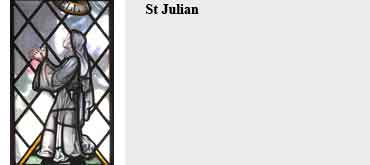 The new 20th century windows were made by G King and Sons and add very much to the restful ambience of this delightful church. The window in the wall between what was Lady Julian’s cell and the chancel. The external window is a memorial to Father Paul Jevon Raybould, who was parish priest from 1925 to 1952
The new 20th century windows were made by G King and Sons and add very much to the restful ambience of this delightful church. The window in the wall between what was Lady Julian’s cell and the chancel. The external window is a memorial to Father Paul Jevon Raybould, who was parish priest from 1925 to 1952
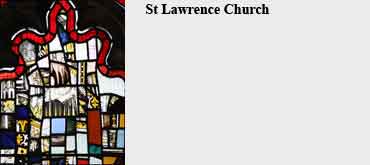 The Church which is owned by the Church Conservation Trust was stripped of its furnishings many years ago. The only stained glass which remains can be located in the east of the church including a medieval “collage” and an 1878 typical Clayton and Bell window.
The Church which is owned by the Church Conservation Trust was stripped of its furnishings many years ago. The only stained glass which remains can be located in the east of the church including a medieval “collage” and an 1878 typical Clayton and Bell window.
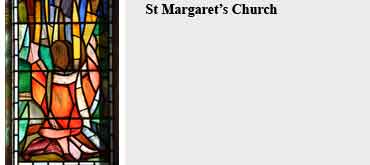 The stained glass that can now be viewed in the church was installed in the 1960s less than twenty years before the church became redundant (1975). The 1967 "expressionist" window of the ascension (Michael King) is particularly striking. Ian Keen's depiction of St Margaret is a good example of using emblems to depict a saint.
The stained glass that can now be viewed in the church was installed in the 1960s less than twenty years before the church became redundant (1975). The 1967 "expressionist" window of the ascension (Michael King) is particularly striking. Ian Keen's depiction of St Margaret is a good example of using emblems to depict a saint.
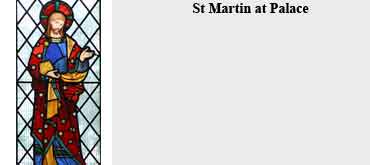 Many windows hold good Victorian glass from the morris workshop and from Heaton Butler and Bayne
Many windows hold good Victorian glass from the morris workshop and from Heaton Butler and Bayne
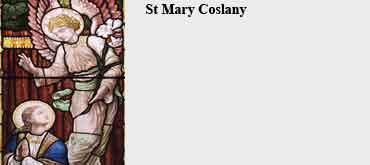 Although a number of windows contain stained glass there is no work of note, the majority of panes being in the form of coats of arms with many of them being in memory of deceased members of the parish.
Although a number of windows contain stained glass there is no work of note, the majority of panes being in the form of coats of arms with many of them being in memory of deceased members of the parish.
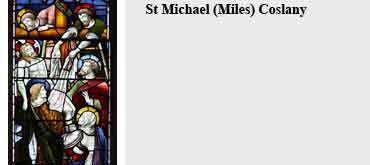 This elegant church is noted for its huge Perpendicular windows. Only three retain stained glass including the unremarkable 1884 Heaton Butler & Bayne east window and the north aisle east window which retains fragments of 16th century stained glass and heraldry
This elegant church is noted for its huge Perpendicular windows. Only three retain stained glass including the unremarkable 1884 Heaton Butler & Bayne east window and the north aisle east window which retains fragments of 16th century stained glass and heraldry
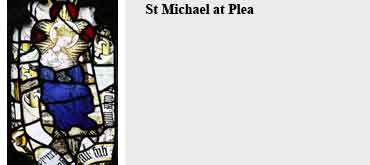 This attractive church has lost most of its stained glass. The fifteenth century remains have been reset in the east window by the Norwich firm of G King and Sons. Although there is scarcely enough to fill the tracery lights the figures of the Angel and the Virgin Mary were obviously made by the “Norwich School” and are delightful.
This attractive church has lost most of its stained glass. The fifteenth century remains have been reset in the east window by the Norwich firm of G King and Sons. Although there is scarcely enough to fill the tracery lights the figures of the Angel and the Virgin Mary were obviously made by the “Norwich School” and are delightful.
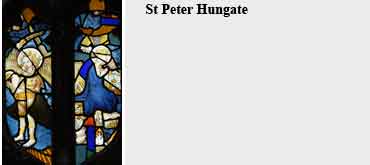 Although much of the medieval glass has been removed from St Peter Hungate there remains in situ absolutely beautiful examples of this art form, from both the 15th & 16th Centuries which it is a real pleasure to see.
Although much of the medieval glass has been removed from St Peter Hungate there remains in situ absolutely beautiful examples of this art form, from both the 15th & 16th Centuries which it is a real pleasure to see.
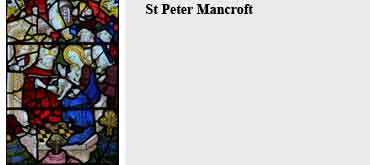 St Peter Mancroft has not only seen its way through the normal maelstroms of the Reformation, Cromwell’s edicts and the Victorian re-ordering but also an explosion in 1648 which blew out much of the glass. Despite this the East window is glorious and contains glass of “both national and international significance” A definite 5* church
St Peter Mancroft has not only seen its way through the normal maelstroms of the Reformation, Cromwell’s edicts and the Victorian re-ordering but also an explosion in 1648 which blew out much of the glass. Despite this the East window is glorious and contains glass of “both national and international significance” A definite 5* church
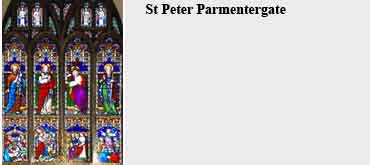 The majority of the stained glass dates from the 19C when the restoration of the glass was part of an Anglo Catholic revival. The church is dominated by the Alexander Gibbs’ East window which is typical of their work portraying “gentle faced figures in gaudy clothes of somewhat discordant colour”. Not to everyone's taste.
.
The majority of the stained glass dates from the 19C when the restoration of the glass was part of an Anglo Catholic revival. The church is dominated by the Alexander Gibbs’ East window which is typical of their work portraying “gentle faced figures in gaudy clothes of somewhat discordant colour”. Not to everyone's taste.
.
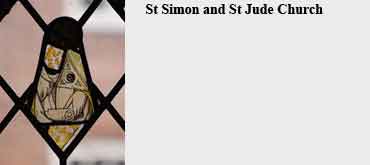 Only remnants of stained glass remain in this church. What there is can be located in the perpendicular North aisle windows. It probably dates from the 15th/ early 16th century.
Only remnants of stained glass remain in this church. What there is can be located in the perpendicular North aisle windows. It probably dates from the 15th/ early 16th century.
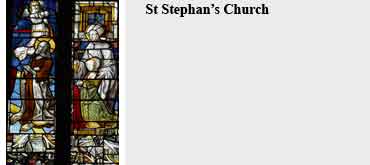 The East window contains some 1511 glass originally located in the monastery of Mariawald in the Ruhr valley, given to the church in 1794 and 1803, together with some English glass of a similar date. The glass in the other windows was made post 1800 with much of it dating from the 20th century.
The East window contains some 1511 glass originally located in the monastery of Mariawald in the Ruhr valley, given to the church in 1794 and 1803, together with some English glass of a similar date. The glass in the other windows was made post 1800 with much of it dating from the 20th century.
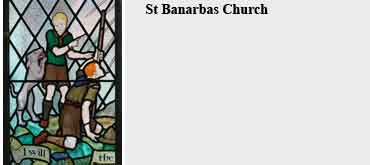 The foundation stone for the church was laid in 1903. The parish was poor and progress depended on funds being raised. Nevertheless, within three years the main building was competed whilst over the next four years a vestry and organ chamber were added.Over the years funds also became available for the stained glass.
The foundation stone for the church was laid in 1903. The parish was poor and progress depended on funds being raised. Nevertheless, within three years the main building was competed whilst over the next four years a vestry and organ chamber were added.Over the years funds also became available for the stained glass.
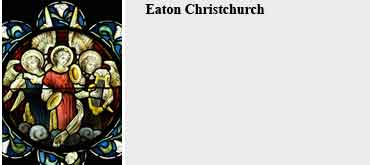 This attractive church built in a neo Gothic style in the 1870’s is an attractive oasis in a popular suburb of Norwich. The stained glass varies considerably in age from 15th century fragments in the porch to a 1985 east window of modern design.
It is much further from the City centre than appears on the map.
This attractive church built in a neo Gothic style in the 1870’s is an attractive oasis in a popular suburb of Norwich. The stained glass varies considerably in age from 15th century fragments in the porch to a 1985 east window of modern design.
It is much further from the City centre than appears on the map.
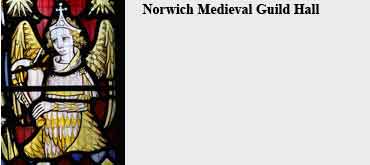 The Guildhall was the first large civic structure of the city. It replaced a small thatched toll house whose main role was to collect market fees. Building began in 1407 and it was essentially completed in 1453 when the windows of the Mayor's Court were recorded as being glazed.
The Guildhall was the first large civic structure of the city. It replaced a small thatched toll house whose main role was to collect market fees. Building began in 1407 and it was essentially completed in 1453 when the windows of the Mayor's Court were recorded as being glazed.
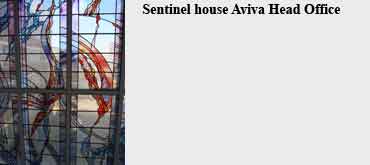 Artist Susan Bradbury's aim was to create a work of art using the vibrance and sparkle of hand-made glass to enhance the specific architectural situations. "Fire and Life". Two sides of a lift tower at Norwich Union Offices are filled with 150 sqm of glass representing sparks, flames, waves and splashes, with richly decorative acid etching.
Artist Susan Bradbury's aim was to create a work of art using the vibrance and sparkle of hand-made glass to enhance the specific architectural situations. "Fire and Life". Two sides of a lift tower at Norwich Union Offices are filled with 150 sqm of glass representing sparks, flames, waves and splashes, with richly decorative acid etching.
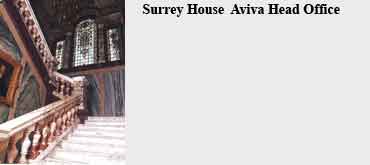 It is almost impossible to prepare yourself for your first sight of Surrey House and its astonishing interior, where the beauty of marble and the skills of the architect have combined to create a unique spectacle. In the Ante room is a collection of glass dating from the 16th and 17th C including glass originally made for Henry Howard's 16th C home.
It is almost impossible to prepare yourself for your first sight of Surrey House and its astonishing interior, where the beauty of marble and the skills of the architect have combined to create a unique spectacle. In the Ante room is a collection of glass dating from the 16th and 17th C including glass originally made for Henry Howard's 16th C home.